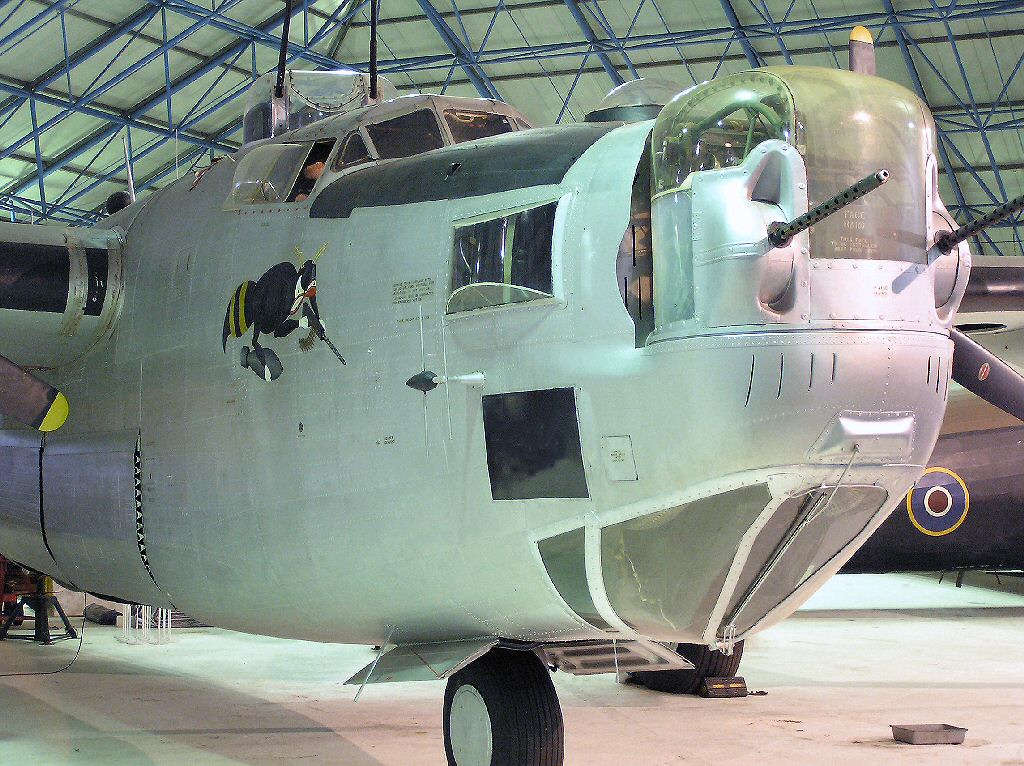|
It could carry 8,000 lb (3,629 kg) of bombs. B-24 had an array of 0.50 caliber (12.7 mm) M2 Browning machine guns in the tail, belly, top, sides and nose to defend it from attacking enemy fighters. It had the nickname of the ‘Flying Coffin’ because the only entry and exit from the bomber was in the rear and it was almost impossible for the flight crew and nose gunner to get from the flight deck to the rear when wearing parachutes. It was sometimes called the ‘flying boxcar’ because of its large slab side fuselage.
RAF Bomber command took 1,900 B-24s and Liberators became the number one strategic bomber in the far east. RAF Costal Command also used B24 Liberators in an anti submarine role in an effort to protect the North Atlantic convoys during the Battle of the Atlantic. This role was dangerous, especially after many U-boats were armed with extra anti-aircraft guns, some adopting the policy of staying on the surface to fight, rather than submerging and risking being sunk by ASW (anti-submarine warfare) torpedoes and depth charges from the bombers.
Prime Minister Winston Churchill used a B-24 Liberator as his personal Aircraft during the war. The RAF still used Liberators until December 1968 when they were sold to the Indian Air Force.
American USAAF B-24s entered combat service in 1942 when on 6 June, four B-24s from Hawaii staging through Midway Island attempted an attack on Japanese held Wake Island, but were unable to find it. The U.S. Eighth Air Force made up one third of the American European bombing force. The other two thirds of the force was comprised of the older B17 Flying Fortresses. Thousands of B-24s, flying from British airfields dropped hundreds of thousands of tons of bombs and incendiaries on German military, industrial, and civilian targets. B24s also operated from North Africa and Italy.
These aircraft photographs are great reference sources if your painting 1/72 scale, 1/48 scale or 1/24 scale plastic model airplane Airfix, Tamiya, zvezda, revel, Pavala aircraft kits or you’re into flying and painting radio RC controlled model planes.
There are many aviation books published about the USAAF Consolidated B-24 Liberator heavy bomber
www.MooreAircraft.com
Tell your friends about us. Send them an e-mail
|
